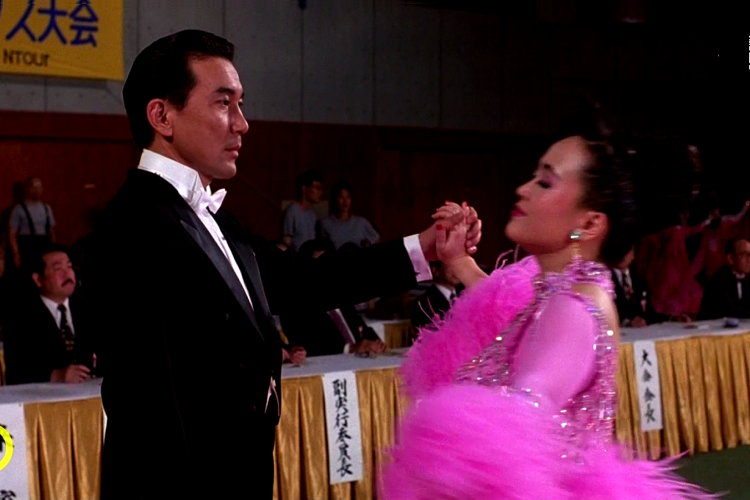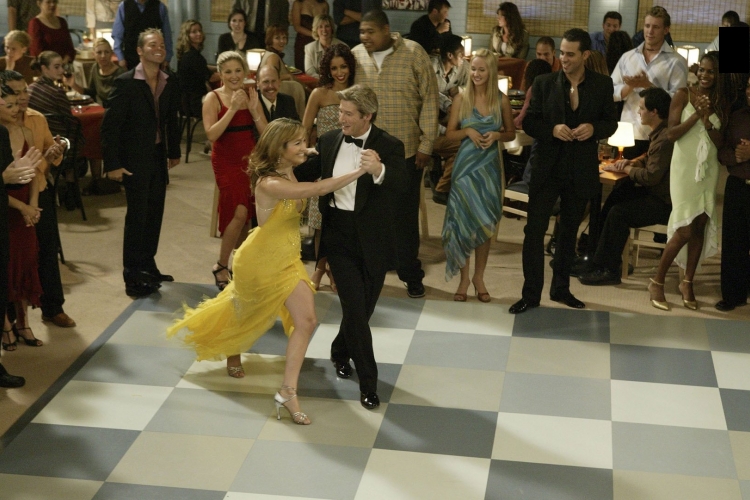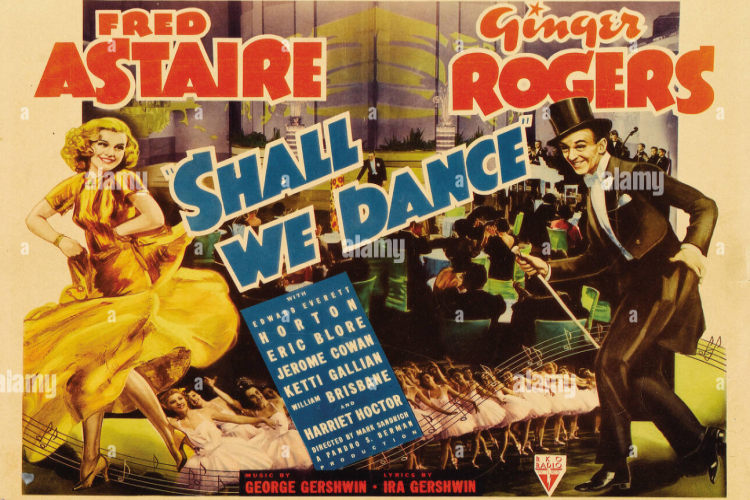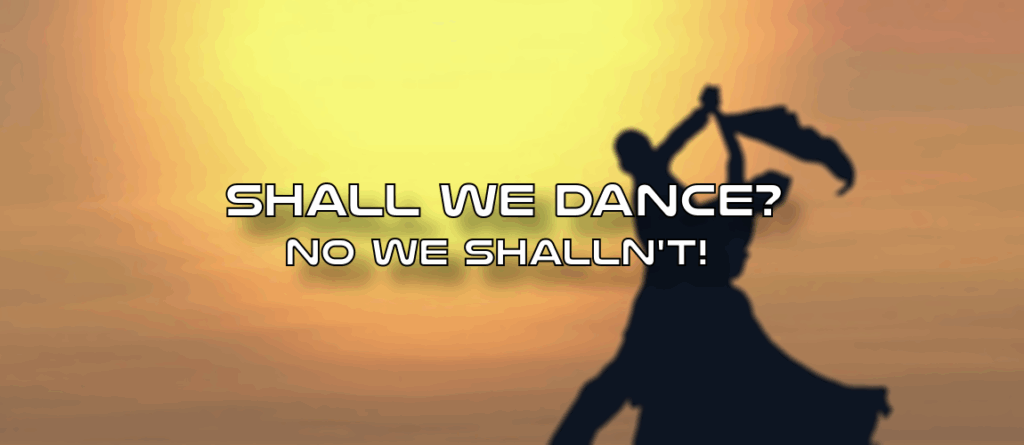Shall We Dance?! No We Shalln’t!
Seth, Seth and more Seth
If you don’t remember the 2004 movie, Shall We Dance?, starring Richard Gere, Jennifer Lopez, Susan Sarandon and arguably Stanley Tucci, you’re in good company. With a budget of some 50 million dollars, it managed to gross around 170 million dollars worldwide, while its 1996 Japanese counterpart of the same name with a budget of some old buttons they found in the dryer only grossed a paltry 35 million dollars. In spite of this, the original was heralded as one of the most successful domestic movies of the 1990s (up there with Studio Ghibli’s Princess Mononoke), and the remake was by all counts considered an utter flop. The reason for this is, not ironically, the very same reason that the original was so successful in the first place, and the very same reason that the utter flopptitude of the remake was guaranteed.
I don’t know if you’ve ever had 35 million dollars burning a hole in your pocket, but it is a pretty hefty sum to bring in for a low budget, low expectation movie starring low name-value TV actors and a professional ballroom dancer who had never previously acted. Even in the US though, this was considered whammy-worthy enough to warrant a 50 million dollars by-the-numbers remake, and once you factor in considerable marketing expenses and the paycheques of four A-list actors, that 170 million dollars barely breaks even. By figures alone, you’re not comparing like with like. You have to consider the numbers in their relative contexts.
Context is also key to understanding why the original made such a mark, and the remake barely left a stain in its own underpants after a particularly vicious curry at the Taj Mahal, just 3 minutes walk from this cinema. It’s not even like they did anything really wrong. It was by all counts a shot by shot remake of the original with mostly superficial localisation. It was certainly competently made, and the plurality of YouTubers that reviewed it described it as a charming, likeable, bargain-bin jewel.
But for 50 million dollars, competent and not utterly terrible is a very low bar to meet.
So before we get on, let’s travel back a few years to the mid 90s. I was a young adult and ready to enjoy my first solo adventures overseas. I had a two week homestay booked in Italy, right in the heart of some rural paradise surrounded by lush, rolling fields and olive trees. On the very first day, the mother of the family, a rotund elderly lady with an angry frown permanently etched on her moustached face was making a traditional pasta recipe that her own grandmother had taught her, and her grandmother before her. As the tomatoes bubbled in the pot and she chopped up onions and garlic at lightning speed, I offered to help. She nearly cut my fingers off, and they were nowhere near the chopping board at the time. Her daughter laughed. “She likes you!” she said. What seemed like hours later, but was in fact considerably longer, I sat down to enjoy the meal with the family. What can I say? It was transcendental! But when I tried to compliment her as such, she asked me what the hell I would know about proper Italian cooking, grabbed my fork mid-bite and kicked me out of the house. To this day I have no idea what the problem was. Maybe she just felt that as an ignorant foreign visitor, I was not on a sufficiently equal footing to pass even positive judgement on the nuanced quality of her offerings. Maybe I over-analysed it and came across as condescending; maybe I insulted her by trying to intellectualise my appreciation over what would have been better expressed by a natural body-language reaction—I doubt I’ll ever know to be honest. What I did know though was that with 13 days left of my stay, and nowhere to do the staying at, nor the resources to secure such a place, I had to find creative ways to make ends meet. It was a tough experience, a harsh introduction to the realities of foreign travel and cultural interchange. I still think back fondly on those hardships.
Contrast this with my first trip to California. There, a saccharine sweet mother prepared pasta while inspirational music blared. As she poured sauce onto the spaghetti, I asked her what kind of ragu she was using. Confused, she showed me it was a bottle of ketchup she was squirting in, and pointed out the cute cartoon mouse on the label, which was the entire reason she’d picked that particular brand. As we tucked in to eat, she constantly told me to smile, because I was enjoying the meal so much, and she even switched out the background music to something that might better reflect the inner satisfaction she assured me I was experiencing. Then her youngest son came running down the stairs—he’d missed the dinner call because he’d been practicing the trombone in his room, standing on his bed with his outdoor shoes on. Just before he reached the dinner table, he did something really dumb: he slipped on an errant rolling pin and fell flat on his backside. How we all laughed, all the way to the hospital.
While we waited for the X-rays, we reminisced about moments from his past—most of which I hadn’t been present for—but they were presented so vividly and in such an organised manner that it was hard to imagine I’d ever had a life outside that family. It’s funny because he never really had a name or any real dialogue, and I think in some of the reminiscences it wasn’t even the same person. It wasn’t until we returned to the house from the hospital that I noticed you only needed a key to exit. It was overall an obscenely eventful but largely predictable fortnight where no dramatic thread was ever left loose by bedtime, but when I returned to Britain, I was surprised in hindsight at how forgettable the whole experience had been.
Which brings me to an important distinction that’s going to become increasingly relevant as this article progresses: the difference between humour and comedy. The general consensus is that comedy is performative, a deliberate injection of the absurd into a situation with the goal of making people laugh. Humour by contrast is the recognition and shared appreciation that life is already filled with absurdities. When I first met my father in law, he told me a terrible joke, the first of many I would endure over the coming years. This was him attempting comedy. When I brought this up with people at his funeral, they laughed, not because I was trying to make a joke, but because we all enjoyed similar memories of him. This common appreciation and celebration of his eccentricities was a perfect example of natural humour finding its own way to the fore.
So returning to the movies, the biggest problem was that the original took place within a social and cultural context that brought resonance and meaning to the characters and the conflicts that they faced. As an audience, we found inherent humour in their foibles. In Japan during that period, for a successful upward-moving corporate accountant with a mortgage, a teenage daughter, and a new sensible car, to suddenly take up ballroom dancing would carry a sense of shame, guilt even; it would be his dirty little secret. But it was what it was: it was the place he’d found that meant something—a space to break out of himself, to find a spark within his boringly perfect, by-the-books existence. In Chicago, a relatively anything-goes city, dance would just be another hobby that nobody would give a moment’s thought to, and when the man in question is Richard Gere, a handsome and likeable old-school romantic, nobody would bat an eyelid. Without that core conflict, the story becomes a will-they-won’t-they romantic quick-step between the married man and the attractive assistant teacher. It’s not a journey of self-discovery, it’s a race to the bottom.
To the extent that a romantic subplot existed at all in the original, it was addressed and dismissed quite early in the story. The protagonist—guilty as charged—initially developed a superficial crush on the dancer in question, putting her high up on a pedestal of his own forging, but he was hardly the first to do so. Everyone—the women anyway—openly acknowledged that creepy middle aged men would come in for lessons hoping to get close to her, and they weren’t even polite enough to pretend otherwise. The dancer knew he was no different, and accordingly treated him with cold hostility. He is of course the last to notice how obvious the whole routine is—a theme which recurs throughout the movie. Before the halfway mark though, she actually confronts him and says directly that if he’s taking classes with her as his goal, then he should probably just sod right off. This causes him, ironically, to double down on the lessons, so as not to be the person she accused him of being, even though she actually had him banged to rights. Again, it’s ironic humour found in day to day mundanity. Without this context, the remake had to inject its own comedy, force-feeding it to the hapless viewer who otherwise wouldn’t know when or if to laugh.
Then there are the side characters: the bald coworker who attends the same school, the private detective, the sweaty overweight beginner who some characters were quick to write off as creepy. They all have their quirks in the original, but they’re taken seriously as characters. They are afforded their own human dignity. Furthermore, they’re held up as a mirror to the protagonist, showing that it’s OK to be comfortable and unashamed of one’s own eccentricities. We understand who they are and the situations they find themselves in. Maybe we see echoes of people we know. Maybe we see parts of ourselves, and maybe those parts aren’t always complimentary. This, again, lends itself to the inherent absurdity. In the remake, they’re almost the same characters from a narrative perspective, but presented as hollow comic relief with no tangible depth. In my opinion, this was a real waste of Stanley Tucci’s talent as a character actor, though putting him alongside his counterpart, Naoto Takenaka, he was certainly a good choice for the role had it been better written and directed.
The biggest victim in the side-character category was the actual dance instructor, who in the original was a sweet elderly lady who was patient, slow to anger, and had a very pure perspective on what it meant to dance the 10 (or 12) standard social dance steps. She loved the dance in all its forms, and she was happiest when she got to share that enthusiasm with others who were eager to learn. In the remake, they made her a jaded has-been, and put a flask of vodka in her locker that she’d take constant guarded swigs from, presumably, to dull the pain of being a side character in a paint-by-numbers Richard Gere rom-com vehicle.
As for the overall tone, the original made extensive use of lengthy periods of silence, avoided staged drama, and just presented everyday life unfolding at its own pace. It also relied nearly entirely on diegetic music—of which there was a lot given the amount of time spent in a studio or dance hall. The resolution with his wife (who, after some suspicion, learned the truth about his secret hobby,) is quiet and reconciliatory, free of emotional breakdowns or arguments, just a very understated, “Sorry I made you sad…”. The remake, fully understanding that audiences are stupid and have to be told how to feel, punctuated every scene with non-diegetic music of every inappropriate genre, and unnecessary drama in every form. Why let a scene play out when you can shoot it with an induced tension dart? It was forced, and ultimately resolved by lots of shouting, crying, and ultimately talking it all through and sorting everything out.
And even worse, the ultimate resolution tool—the ever-looming all American grand romantic gesture™.
At this juncture, it would be negligent of me not to mention the detail that said romantic gesture was performed to the tune of Peter Gabriel’s Book of Love, which is certainly epic grand gesture music. It featured in an episode of South Park, which is perhaps where it gained its popularity. However, the music is a cover (and I’ll admit, one of the better ones) of the same song by The Magnetic Fields. What it gains in budget based polish though, it falls short by completely missing the point. The song is dripping with natural irony. “The book of love is long and boring, no one can lift the damn thing.” It is not a grand gesture song. In fact, although The Magnetic Fields were unavailable for comment due a petty tit-for-tat injunction order I’m currently appealing, it is my belief that the song was intended satirically, poking fun at the very idea of the grand gestures it later became synonymous with.
There was no such scene in the original because grand gesture scenes—unless done with exceptional nuance and expertise—are for lazy hacks who don’t respect their audience, or even the lead actor. Richard Gere always gets a grand romantic gesture in his movies: Officer and a Gentleman, Pretty Woman… I can’t think of any more, but three out of three is a clear pattern. And it’s a shame: Officer and a Gentleman was a well made movie and he gave a strong performance in it. Next thing you know, every hack director wants to shoehorn him into their half-baked claptrap as an instantly likeable, easy on the eyes, and unforgetably romantic lead. This could have been Tom Cruise’s fate too, but he decided he’d rather risk his life riding motorcycles off cliffs and clinging onto the side of aeroplanes than have any more romantic scenes with Nicole Kidman.
Now something I’ve maintained for a long time is that interested people are interesting. If you find a topic boring, the problem is often that you just don’t know anyone sufficiently interested in it. This was very much true of the original movie. There was so much interest and enthusiasm shown towards ballroom dancing that it not only ended the social stigma associated with it but actually started a social dance craze in the real world. Perhaps anticipating this, they reflected it in the movie. The protagonist’s wife, wondering what her husband was up to Wednesdays and Saturdays, hires a private detective to follow him for a few days (and the obvious question here—have you tried just talking to him?—was asked directly by the PI before any services were rendered). Three days are up and he reports back on exactly what her husband’s been up to, and exactly why it’s nothing for her to worry about. End of story, right? Well, no. He continually turns up at dance events to see the protagonist learn and perform, becoming increasingly knowledgeable of the pursuit each time he appears. The protagonist’s enthusiasm had clearly rubbed off on him!
The PI in the remake, well, they couldn’t have picked a more suitable actor than Bob Newhart, but he was just written as a joke. He kept turning up in later scenes because he was already knowledgeable and wanted to share his wisdom and screentime with his young and hip assistant. He had no arc. It was as if they decided that now they’d got this great comedy actor in the bag, they may as well shoehorn him in wherever they could. Again, they couldn’t have picked a more suitable actor than Bob Newhart, which makes their choice to hire Richard Jenkins, a kind of poor man’s Bob Newhart for people with more money than sense, all the more baffling.
You know what? I take that back. Richard Jenkins did a fantastic understated job in the role that was written for him. He’s a great actor, and in 2004 they would have cost about the same either way. I just remembered it as being Bob Newhart in that role for some reason. Read into that what you will.
Unfortunately, all of this is all too common with Hollywood remakes. If it were simply a case of not understanding the source material, that would be one thing. But they understood it just fine. They just didn’t respect it—and they certainly didn’t trust their audience. For mass appeal, everything has to fit into a clearly labeled box: this was sold as a romantic comedy, so those two elements had to be dialed all the way past maximum and into the feedback loop.
Throw in an expensive and diverse musical score, shoehorn in multiple A-list actors, turn every character into a hollow wacky caricature, and spend the GDP of several developing nations gaslighting an unsuspecting public into believing it’s the movie of the decade… it simply becomes too big to fail. At least, not without deliberate, pre-emptive sabotage—a fairly standard marketing strategy these days. Many modern productions flop by design; they’re crafty scams exploiting the absurdities of Hollywood accounting. The trick is to lash out at the very fans they rely on for success before the movie even screens, framing its inevitable box office failure as a toxic cultural backlash, rather than admit to their own tone-deafness over what audiences actually value.
I do believe the people involved in creating this remake wanted it to succeed—at least at first. Perhaps they intended to ride the coattails of the original’s success, but with staff rotations and executive meddling, that memo got lost along the way. What remained was just another machine-inserted sausage for nutrition-free mass consumption. In the end, they did the bare minimum to make it moderately entertaining, but weren’t willing to commit to any of the real effort needed to make it worth watching. The stakeholders got a conservative return on their investment—enough to bury a trickle of money offshore—but the world was no better for it.



Meanwhile, the original did none of this. It was quietly made, released to minimal fanfare, and its success was entirely organic. It was the movie that everyone suddenly realised they’d always wanted to see, which was a subtle reflection of the protagonist’s own experience upon discovering the joys of social dance. It wasn’t even a romantic comedy. It was just a straightforward, quirky, credible, slice-of-life human drama.
And who in the world could ever relate to that?
Watch the trailers below
Many thanks for reading this article. We hope it was interesting, informative and entertaining. Follow us on social media or share our content on your own pages. It helps us grow so we can create more free content for you.
